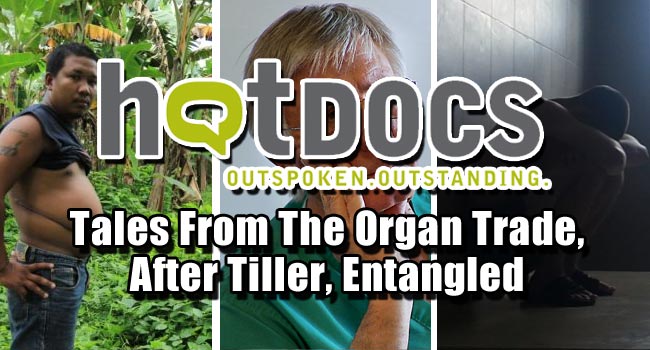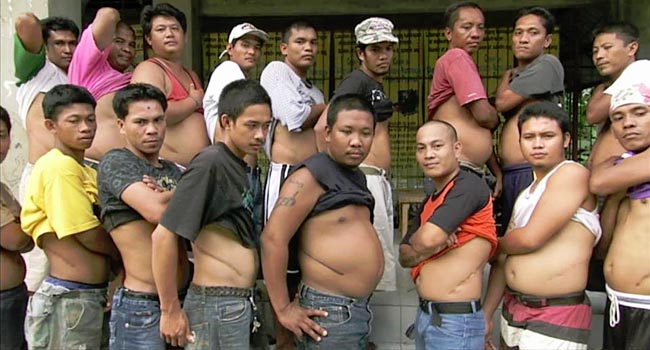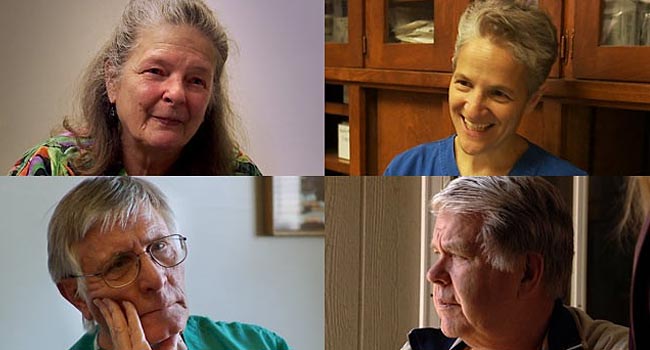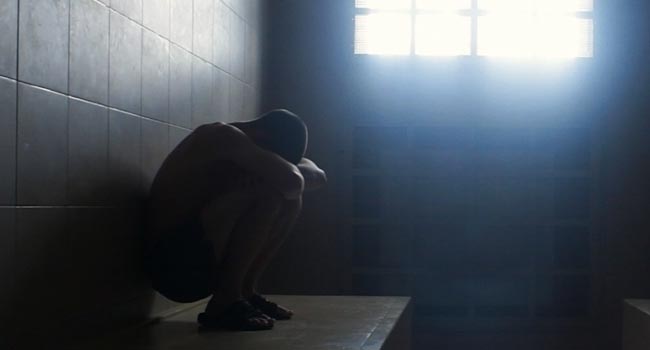2013 Hot Docs: Tales From The Organ Trade, After Tiller, Entangled

Tales From The Organ Trade

A perfect example of when the subject matter actually proves to be interesting is Tales From The Organ Trade. In what seems to be a cheeky move, director Ric Esther Bienstock gets David Cronenberg to narrate her documentary about black market organ transplants. Starting in the Philippines, Bienstock films an organ trade in progress as an organ broker picks a viable candidate willing to sell their kidney.
At the same time Bienstock cuts between different people who have (or already had) looked into kidney transplants: a woman who’s been on a waiting list for 8 years, a man who paid for a black market transplant to save his life, an American looking for altruistic donors and some of the more famous transplant doctors who are currently on the run from the law. Eventually the doc goes into full-on advocacy mode, arguing that financial incentives for donating an organ shouldn’t be illegal.
There’s no doubt that Tales From The Organ Trade is a compelling feature, and watching it will definitely make people wonder why selling an organ is illegal, but that’s because Bienstock doesn’t really delve beyond the surface. The possibility of people being exploited against their will is never discussed (everyone who sold their organ talk about how it was their choice, and they had no regrets), and there’s no attempt to look further into poverty and other factors that cause people to sell their body parts. Despite being well-made, Tales From The Organ Trade is too simplistic to have any meaningful impact.
After Tiller

My most anticipated documentary of the festival, After Tiller, turned out to be the biggest disappointment. The subject matter is one that’s so problematic that the audience had to be checked by security at its Sundance premiere. The title refers to Dr. George Tiller, one of five doctors in the United States who can perform third-term abortions. In 2009, Tiller was murdered by a pro-life activist, and After Tiller follows the four remaining doctors who can perform the same procedure.
Doctors Shelley Sella and Susan Robinson, who worked with Tiller until his death, set up a clinic in New Mexico, while Doctors LeRoy Carhart and Warren Hern run clinics in Nebraska and Colorado respectively. Carhart faces the most trouble from protestors, as his decision to start providing third-term abortions after Tiller’s death causes Nebraska to pass legislature making it illegal to perform the procedure. The other three doctors mostly discuss how hard their job is both on a physical and mental level, as they constantly face threats against their own lives and grapple with the morality of what they’re doing.
After Tiller is, to put it simply, a surprisingly boring documentary considering how sensitive of a topic abortion is. It could be that, knowing the facts about what they’re doing already (the vast majority of these procedures are done because of issues that will harm the baby or mother significantly, not because of frivolous reasons), none of what I saw was especially fascinating. Other than a few compelling parts, like Dr. Hern explaining how his time working at a maternity ward in Peru inspired him to work with Tiller, there isn’t much explored here. The general message is that their line of work is hard, but I didn’t need a documentary to tell me that. I recommend people watch Lake of Fire, a more thorough and interesting look at abortion, instead.
The Conversation
Finally, two documentaries that did try to shake things up came from the festival’s ‘Made in Poland’ program. The first, a short film called The Conversation, will probably baffle anyone who didn’t read a synopsis beforehand. A man and woman, both in jail for committing murder, have communicated with each other through mail for almost a decade without ever seeing each other. The short films their first conversation, held over webcam while intercutting between the woman’s time out of jail on a day pass.
At first the poorly translated subtitles, combined with the lack of context for anything on screen and cheap quality of the footage, make the film repellant. However a few minutes in, whether it was intentional or not, it started to cast a spell on me. There was something sinister to the whole film, and even though I had a hard time understanding I embraced the atmosphere director Piotr Sulkowski managed to create.
Entangled

Unfortunately the film that followed, Lidia Duda’s Entangled, failed miserably at what it wanted to accomplish. The film focuses on a teenage boy who tried to get revenge on the man who molested him at a young age. After nearly beating the man to death, he went to the hospital and unsuccessfully tried to murder him again. Duda intercuts between the boy serving his jail sentence and his molester, who is now free after serving a jail sentence years ago.
While Entangled has some terrific cinematography, it’s Duda’s choice to obscure everyone’s faces in the film that tank her film. She shoots both of her subjects from behind or with camera angles that obscure their faces, a choice she makes to highlight how the story could apply to anyone. The only problem is that this story is incredibly specific, and any attempts to explore themes of revenge and rehabilitation get drowned out by the style. As much as I can respect Duda’s approach, it makes for some unbearably dull viewing.
